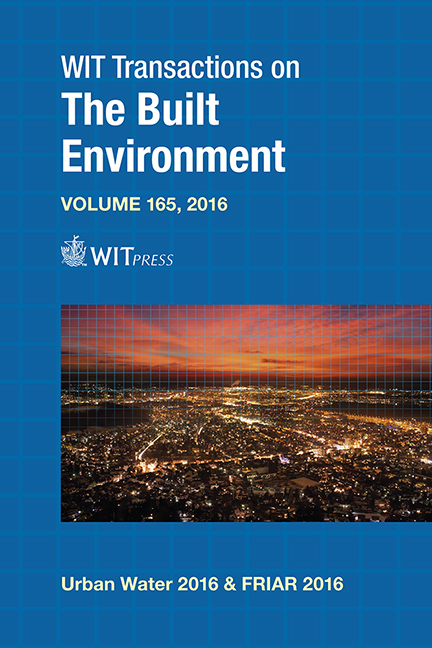A Calamity Of A Severe Nature: Case Study – Chennai, India
Price
Free (open access)
Transaction
Volume
165
Pages
10
Page Range
227 - 236
Published
2016
Size
1,422 kb
Paper DOI
10.2495/UW160201
Copyright
WIT Press
Author(s)
S. Esther, M. D. Devadas
Abstract
Chennai is a bustling metropolitan city on the Coast of Tamil Nadu, South India. Although the North East monsoon is due during the months of October and November, it has hardly been a respite to the city and by extension, to the state of Tamil Nadu over the past decade. Chennai has an average rainfall of 16 inches in November. However, 2015 saw a 100-year record break in terms of precipitation over the city. Successive depressions over the Bay of Bengal resulted in two massive spells of rainfall in the city. On November 15, the rainfall recorded in Chennai was 10.5 inches and it peaked on December 1 to 19.3 inches. This was the day that the city went under. A hitherto unknown name for the common man, “Chembarapakkam”, which was one of the largest reservoirs for the city, caused terror every time the news flashed that the gates of the reservoir would be opened to release excess water. Mass destruction reigned the following two days with almost every lake, river and canal overflowing, resulting in severe flooding and damage to life and property. What is interesting to note is that the government chose to term it as a “calamity of a severe nature” as opposed to “natural calamity”. Simply put, the disaster was largely man made and that due to mismanagement. This paper aims to look at the causes for the flooding and preventive measures to avoid such catastrophes in the future.
Keywords
flood, watershed system, wetlands, marshes, floodplains, drainage systems, runoff, permeability, river banks, encroachments





